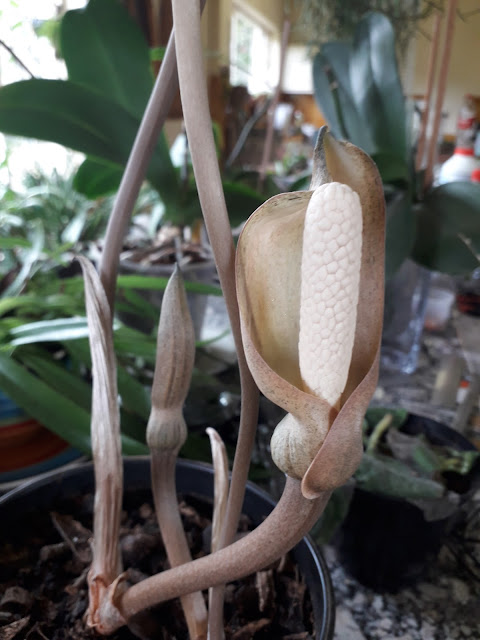Here are a few photographs taken with a cell phone of plants and other things of interest in and nearby to the eMalangeni Forest.
Crinum stuhlmannii subspecies delagoense belonging to the plant family Amaryllidaceae these magnificent bulbous plants grow in profusion on the forest edge and in the adjoining grassland at eMalangeni.
Eastern Hinged Back Tortoise Kinixys zombensis in the eMalangeni Forest. Hinge backs are unique for their ability to close the back part of the shell to protect them from predators. They are a significant food source for humans through much of their range
Poison olive Peddiea africana a small attractive forest understory tree with glossy dark green leaves belonging to the plant family Thymelaeaceae.
The attractive white flower of the scrabbling herb Creeping Foxglove Asystasia gangetica belonging to the plant family Acanthaceae. these plants grow both in full sun as well as in the forest shade. Asystasia gangetica is the larval host plant for a number of colourful butterflies in particular the Blue Pansy, Junonia oenone oenone belonging to the family Nymphalidae.
This beautiful Blue Pansy butterfly, Junonia oenone oenone belonging to the family Nymphalidae is found throughout Africa.
The twin crowns of the majestic Forest Cabbage Tree, Cussonia sphaerocephala poking its head through the forest canopy.
The crested guineafowl Guttera pucherani a member of the family Numididae can be seen at times in open patches of the eMalangeni forest or on the forest margins.
Large expanses of Zamioculcas zamiifolia a tropical perennial plant native to eastern Africa, from southern Kenya to northeastern South Africa can be seen growing on the eMalangeni forest floor. Zamioculcas zamiifolia commonly referred to as the ZZ plants is a very well known and very popular house plant in many countries around the world. Growing at the base of the tree is the epiphytic fern, Microsorum punctatum.
The stately Dracaena aletriformis the larval host plant for a number of forest butterflies and moths. when in flower Dracaena aletriformis attracts vast numbers of insects to its flowers and birds that eat the soft yellow berries that ripen in the winter months.
The bright red flower of the Dwarf Coral tree Erythrina humeana can be found in the late summer to early Autumn months on the eMalangeni forest margin as well as in the surrounding grassland.
Guided excursions
Please join us on one of our many guided excursions conducted in Zulu, English or German into the eMalangeni Forest, Kosi Bay area, Tembe Elephant Park the home of the world largest elephants and other surrounding natural areas.
Please visit one of my websites for my contact details.
Michael Hickman
18.04.21
Please visit my websites at
as well as my other blogs at
http://luthulienvironment.blogspot.com/
http://ecomandurban.blogspot.com/























